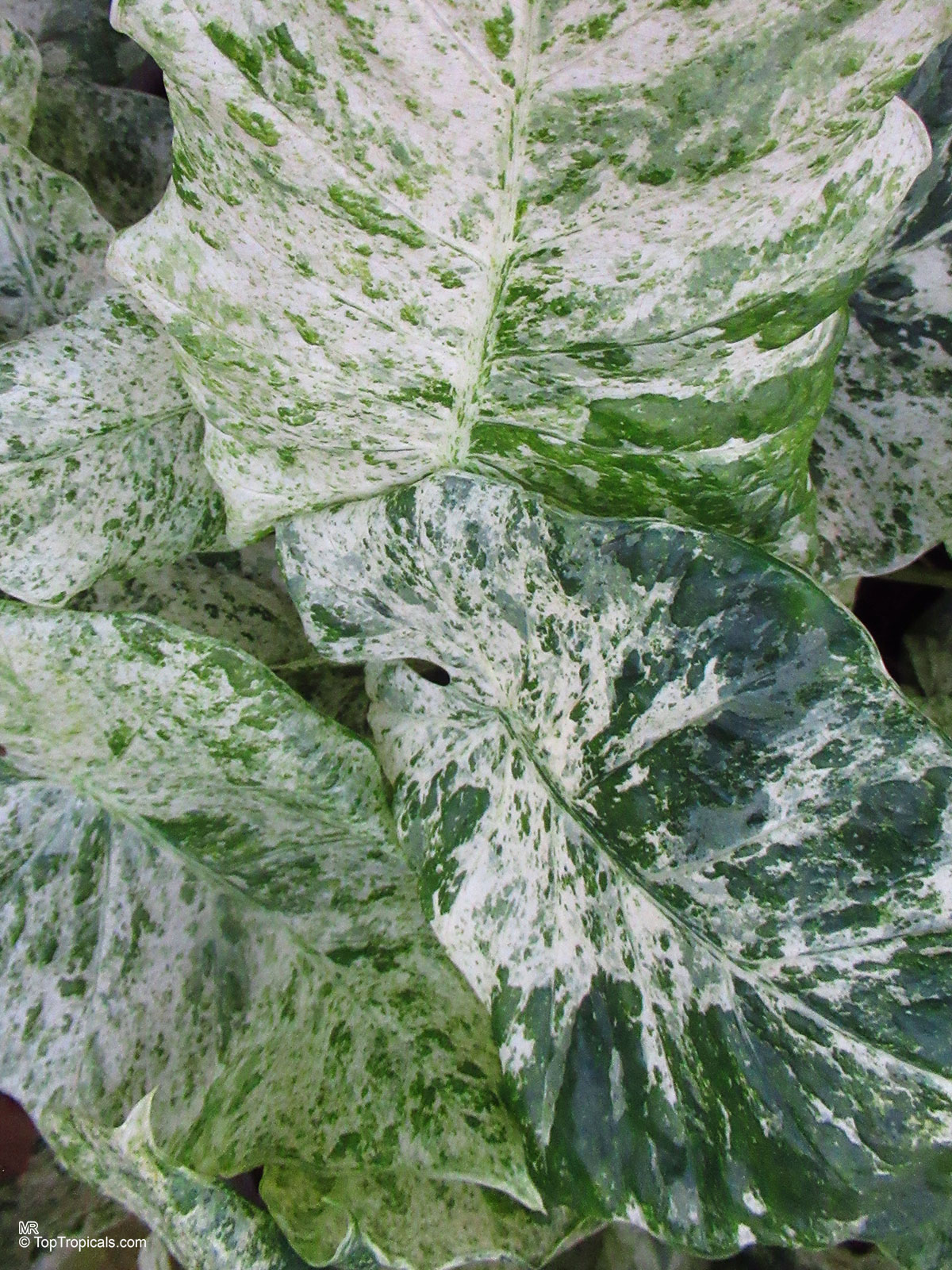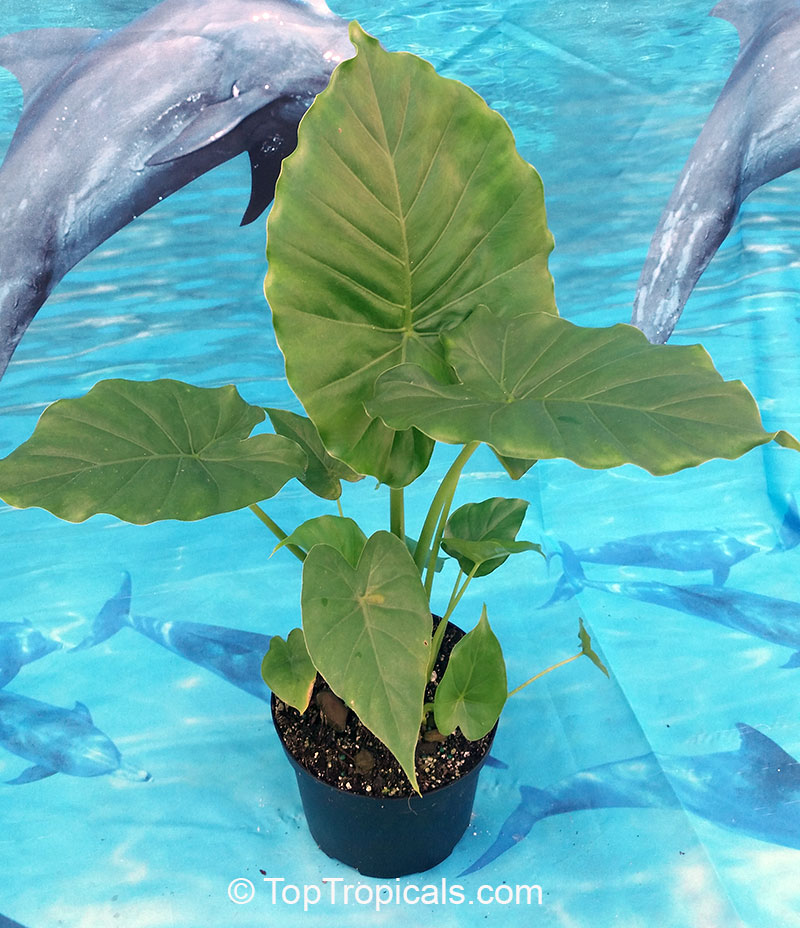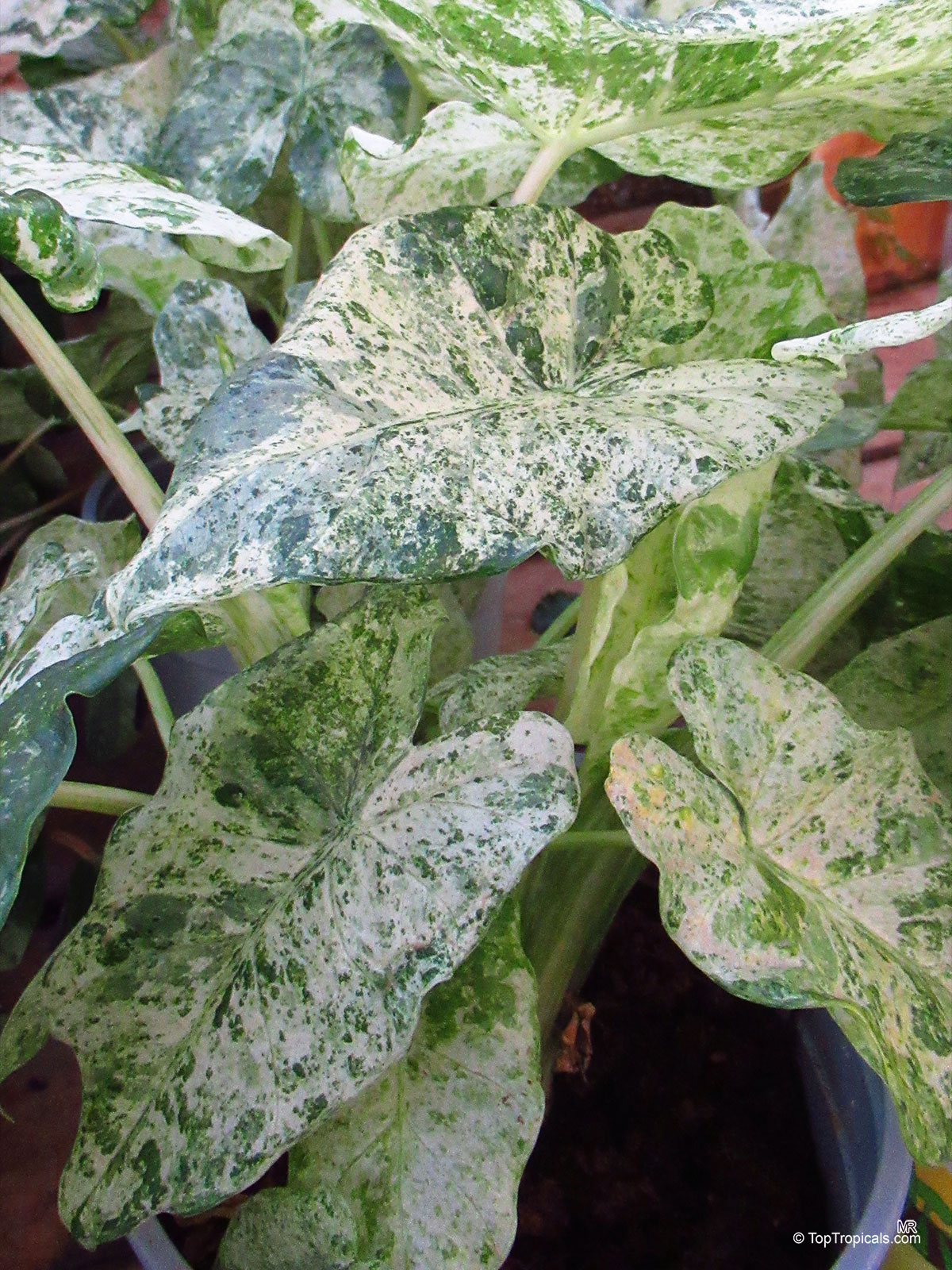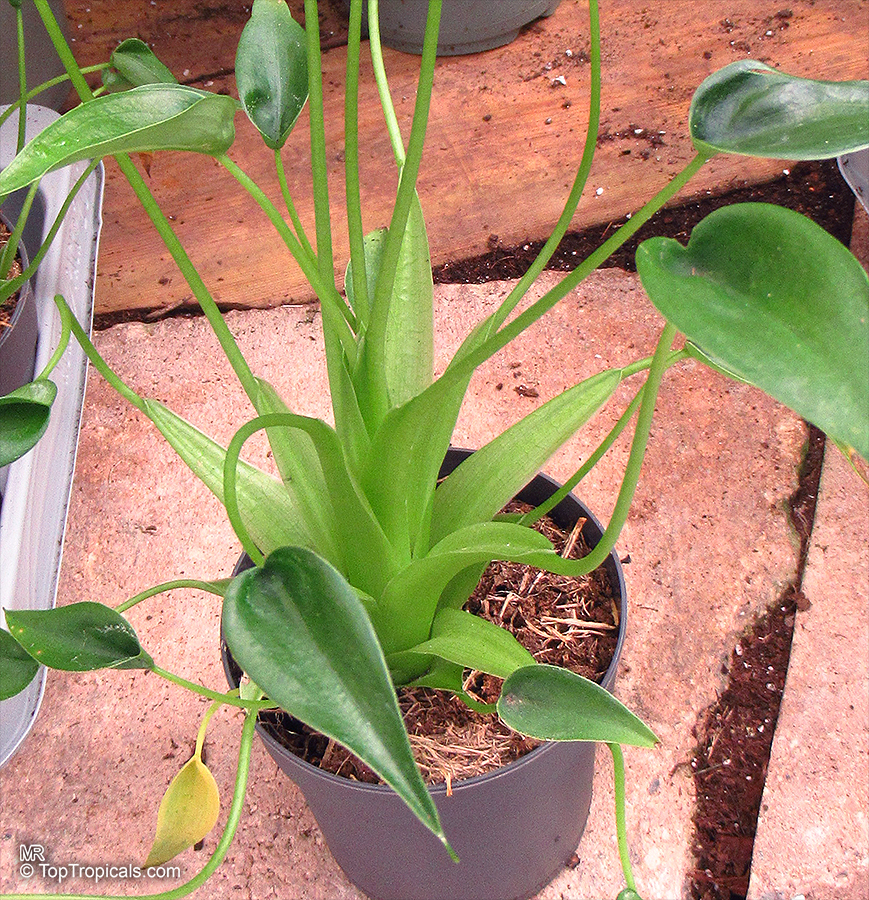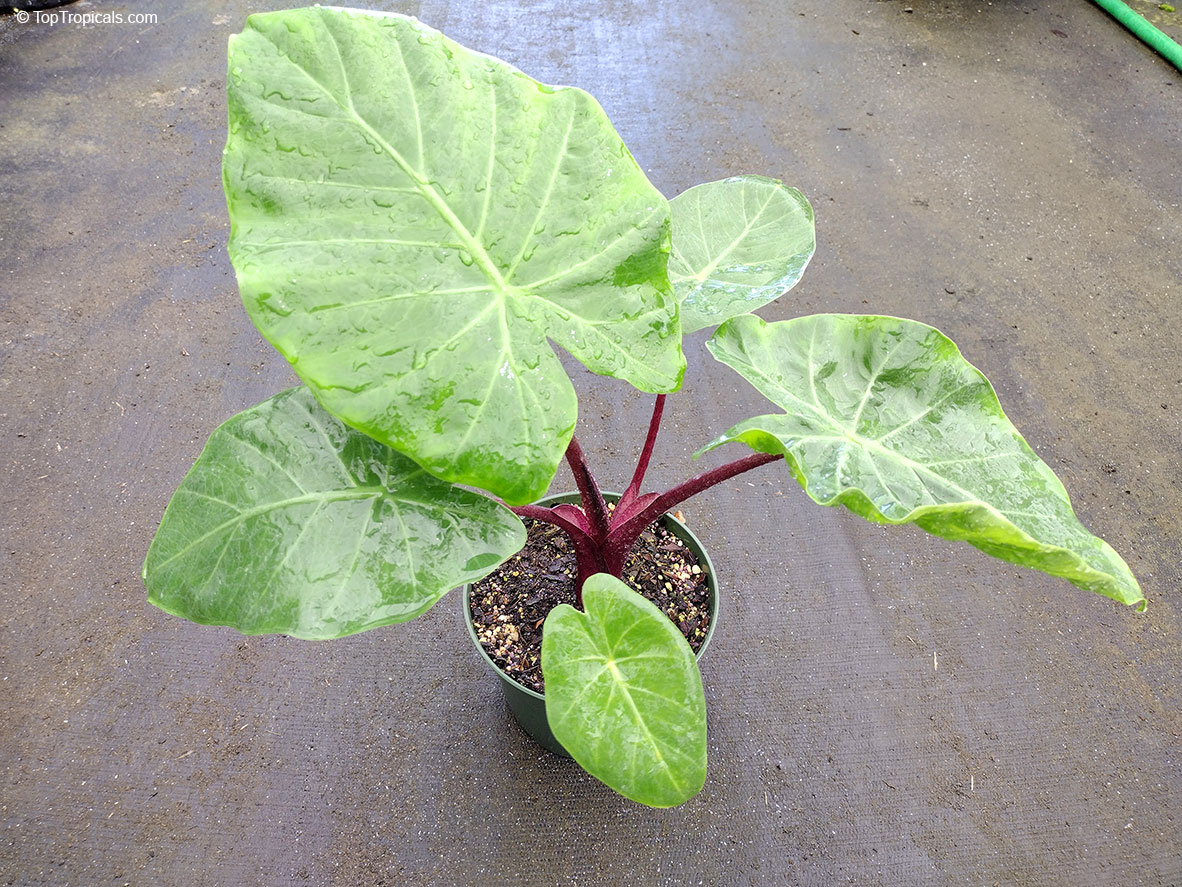Alocasia odora (Giant Upright Elephant Ear)
Top Tropicals Plant Encyclopedia
Botanical name: Alocasia odora
Common name: Giant Upright Elephant Ear
Family: Araceae
Origin: Tropical Asia










It grows in light shade to partial sun, in a well-drained, fuzzy soil. Where cold winter temperatures occur, it is best to plant these in a container that can be moved indoors; they are only cold-hardy to Zone 7-11, so Zone 8 and below should take extra caution, as this plant cannot tolerate frost.
A tall, woody perennial, Alocasia odora typically grows up to 5-10 feet tall in its native Tropical Asia. With its large, striking leaves and small, off-white/white fragrant flowers, it has become a popular ornamental choice for gardens. The foliage has an intense shine, and striking color contrast with the veining and patterning.
Alocasia odora prefers partial shade and regular water. It will tolerate bog or aquatic garden conditions and flood-like conditions. It requires a soupy soil or a soil that allows for good drainage.
In order to ensure a healthy, robust growth, it is important to evenly water the plant regularly, ideally using a moisture meter to determine the proper moisture level. It is also recommended to place the plant in spots where it will receive plenty of indirect sunlight and to fertilize it bi-weekly.
However, in cold regions, it is essential to be aware of the fact that Alocasia odora is only cold-hardy to temperatures at least as low as 30°F for a short time. To prevent any cold damage, it is best to move the plant indoors and it might be good to keep it in a pot rather than planting it in the ground.
Overall, Alocasia odora adds a unique texture and delicate beauty to any garden or home. With its large, architectural leaves and fragrant blooms, it is no wonder that this plant has become a much sought-after ornamental for any garden.
Alocasia 'Tiny Dancer' is unlike any other.This hybrid (scientific name: Alocasia brisbanensisxlocasia odora), created in 2013 is known for its long green petioles with small cupped leaves in a unique teardrop shape. While the plant grows upright, its petioles tend to fan out, curving in different directions like they are dancing.
Alocasia 'Imperial Red' is a hybrid between Alocasia odora and a pink petioled (stem) clone of Alocasia Macrorrhiza.
Similar plants: Alocasia odora (Giant Upright Elephant Ear)
- Alocasia baginda (Alocasia Dragon Scale)
- Alocasia clypeolata (Green Shield Alocasia)
- Alocasia cucullata (Lucky Leaf)
- Alocasia cuprea (Mirror Plant)
- Alocasia lauterbachiana (Alocasia)
- Alocasia macrorrhizos (Giant Taro)
- Alocasia reginula ''Black Velvet'' (Dwarf Alocasia)
- Alocasia sanderiana (Kris plant)
- Alocasia scalprum (Samar Lance)
- Alocasia sp. (Alocasia)
Requires consistently moist soil; do not let dry out between waterings. Very high moisture needs; suitable for bogs and water gardens.
Recommended Fertilizer: SUNSHINE Robusta - Rapid Growth Booster
